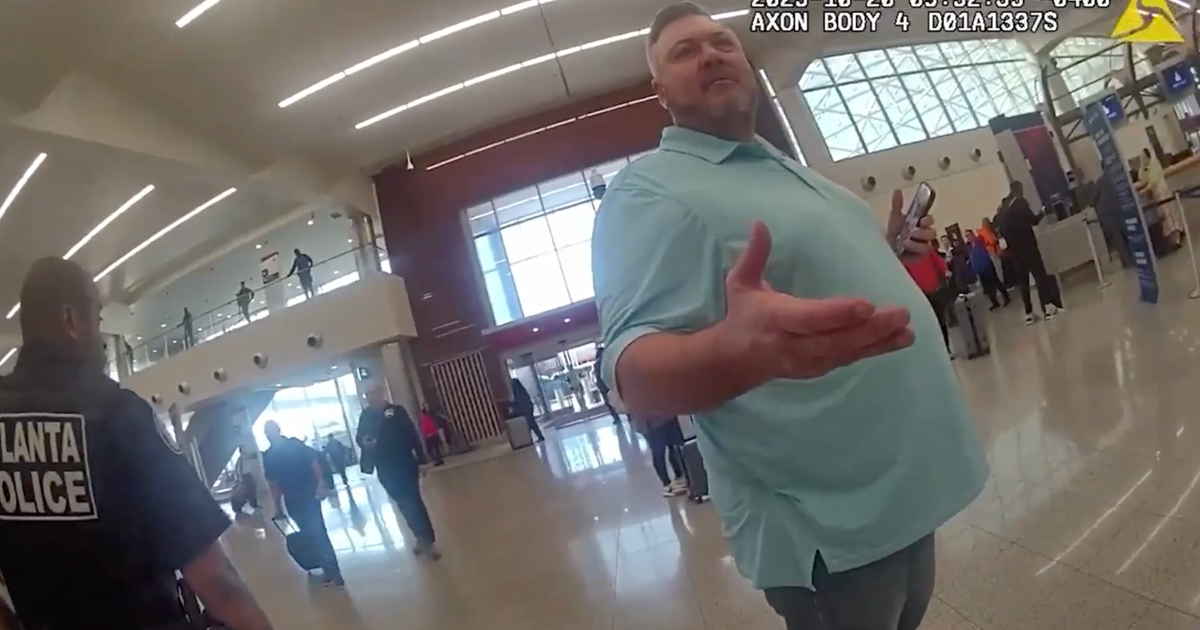Did "violent" patient plan psychiatric hospital escape?
HONOLULU -- A man acquitted of a 1979 murder by reason of insanity escaped from a Hawaii psychiatric hospital over the weekend, took a taxi to a chartered plane in Honolulu bound for the island of Maui and then boarded another plane to San Jose, California, police said.
59-year-old Randall Saito, believed to be in Northern California, is considered extremely dangerous and should not be approached, Honolulu police said late Tuesday.
As federal authorities join in a massive multi-agency manhunt for the man who has been described as a "violent psychopath," details about his past are emerging. Documents from 1993 obtained by CBS affiliate KGMB show Saito has in the past had sexual relationships with at least three staff members at Hawaii State Hospital outside Honolulu, where he was committed in 1981, two years after he was acquitted in the killing of Sandra Yamashiro.
Sources tell the station he was able to obtain contraband like cellphones and pornography during some of the sexual encounters. An FBI behavioral expert reportedly testified that the improper affairs, along with Saito's alcohol abuse, made him even more threatening.
A staffer who didn't want to be named told the station he didn't know how Saito escaped, but said he was known for his manipulative behavior and suspected he had help.
It was not immediately clear under what circumstances Saito left the facility in Kaneohe. Sources tell the station it appears the escape was well-planned.
Hawaii State Hospital Administrator William May said officials are fully cooperating with law enforcement and appropriate steps would be taken if Saito had help from someone inside the facility.
Saito left the state hospital outside Honolulu on Sunday at 10 a.m. and didn't return, police said. Hospital staff called 911 to report his disappearance shortly after 7:30 p.m. - two hours after he landed in San Jose, police said. An all-points bulletin was issued at 8:30 p.m.
Surveillance video in the cab show Saito had a backpack stuffed with items including a cell phone and portable charger, reports KGMB. During the ride, Saito is seen texting on the phone, then rifling through the backpack.
Sources tell KGMB Saito's ticket to California was purchased online and that he had paid for both his cab ride and his charter flight in cash, using an assumed name. After boarding a charter plane to Maui, he took a Hawaiian Airlines flight to San Jose, the station reports. That flight landed about 5:30 p.m. Sunday Hawaii time.
The FBI and U.S. Marshals Service have reviewed security footage from San Jose International Airport in connection with the manhunt, said Jon Vaden, a spokesman for the airport.
He said police have not advised him of any threats at the facility.
Late Tuesday night, the Hawaii Attorney General's office charged Saito with felony escape and issued a $500,000 bench warrant for his arrest. Hawaii Attorney General Doug Chin said officers in all 50 states may enforce the arrest warrant.
"This is a dangerous individual," Chin said. "We need him off the streets."
Sandra Yamashiro, Saito's victim in the 1979 slaying, was shot and repeatedly stabbed before her body was found in her car at a mall. The victim was selected at random, authorities said at the time. After the murder, Saito was reportedly diagnosed with sexual sadism and necrophilia, or sexual attraction to corpses.
"Because he committed a murder, no matter how long ago it was, he still has ability or inherent ability to do another murder or violent crime," Wayne Tashima, a Honolulu prosecutor, told CBS affiliate KGMB.
Tashima warned people not to approach Saito, saying there's a concern he could commit the same "very heinous and violent offense" again. Authorities asked anyone with information to call police.
In 1993, a court denied Saito's request for conditional release, saying he continued to suffer from sexual sadism and necrophilia.
Defense attorneys again sought to have Saito released in 2000. But Jeff Albert, a deputy city prosecutor, objected, saying Saito "fills all the criteria of a classic serial killer."
The state Department of Health operates the hospital, which houses over 300 patients in Kaneohe. The department said it's investigating the escape.
"There is a serious lack of information for the public," said Nicholas Iwamoto, who was stabbed 18 times on a popular Hawaii hiking trail in 2009. His attacker was found legally insane and sent to Hawaii State Hospital. He was later granted conditional release to attend community college, a decision Iwamoto wasn't notified about.
"Public safety has certainly been compromised," Iwamoto said. "It's extremely alarming. But nothing from the state surprises me anymore."
Irving Tam, who has lived near the hospital in Kaneohe for about 30 years and was walking by the facility on Tuesday, said he worries about hospital patients getting out in his neighborhood.
"When they do escape, especially someone with this kind of a record, there is a high degree of concern, he could be violent and who knows," Tam said. "That's why I have a gun, for this very reason. Hopefully I never use it."
Tam said he heard about the escape from a neighbor, not the police, hospital or the media, and that patients have gotten out several times in the past.
"This is not totally uncommon, we have had similar incidents in the past, and fortunately nothing has ever happened," Tam said.
Tam thought that someone with a violent past like Saito should closely monitored. "It is disturbing that he was given that much freedom," he said. "You would think he would be under heavier security."
Saito was the impetus for a rule change in 2003, when the state attorney general's office decided mental patients committed to Hawaii State Hospital have no legal right to conjugal visits.
The issue came to light when the hospital administrator learned Saito had been escorted home for weekend conjugal visits over two years. The administrator blocked the visits away from the facility and on its grounds.
Dangerous psychiatric patients have escaped recently from other facilities in the United States.
In Washington state in 2016 a man accused of torturing a woman to death broke out of the state's largest mental hospital. Anthony Garver crawled out of a window of his ground-floor room at Western State Hospital, rode a bus 300 miles to Spokane and was captured days later without incident.
After the escape Washington Gov. Jay Inslee fired the hospital's CEO and brought in the Corrections Department to inspect the building for security improvements.
A review of police reports by The Associated Press found 185 instances in the 3 ½ years before Garver's escape in which Western State patients escaped or walked away.







